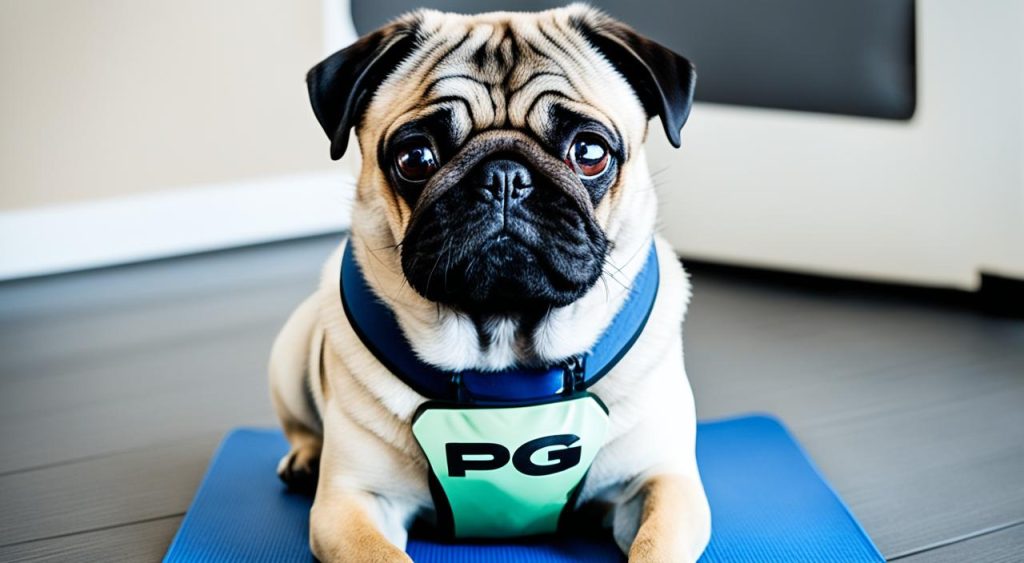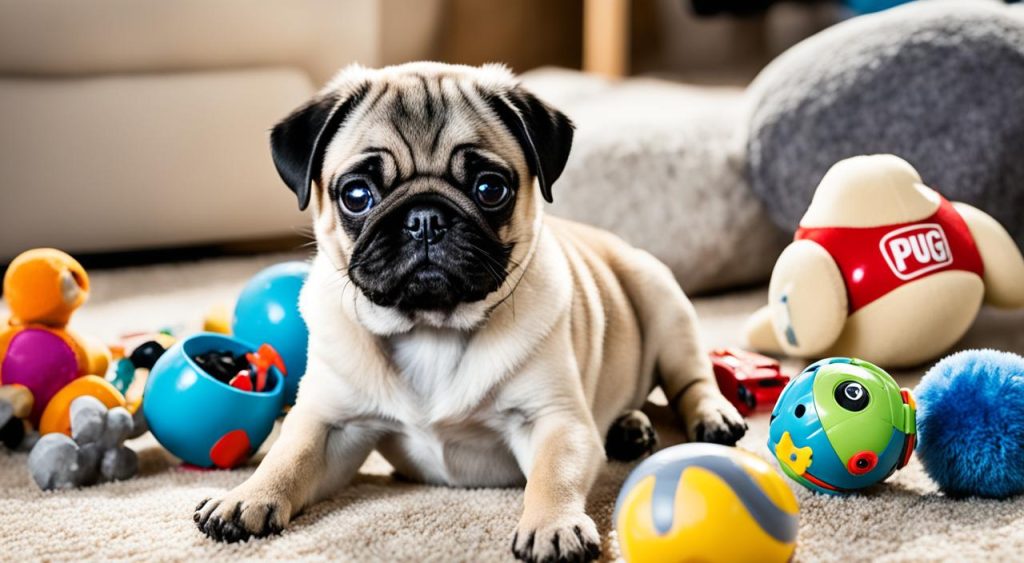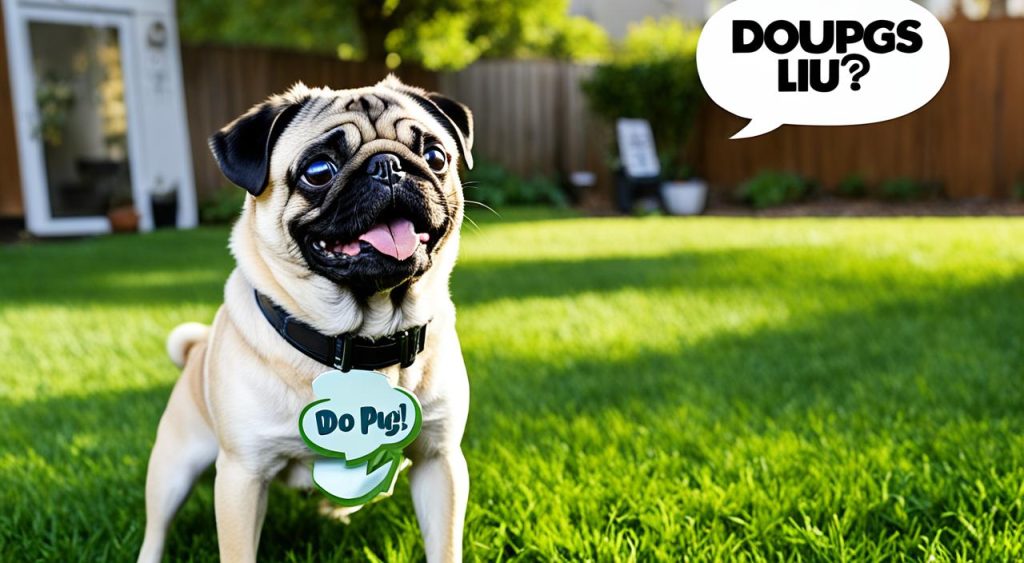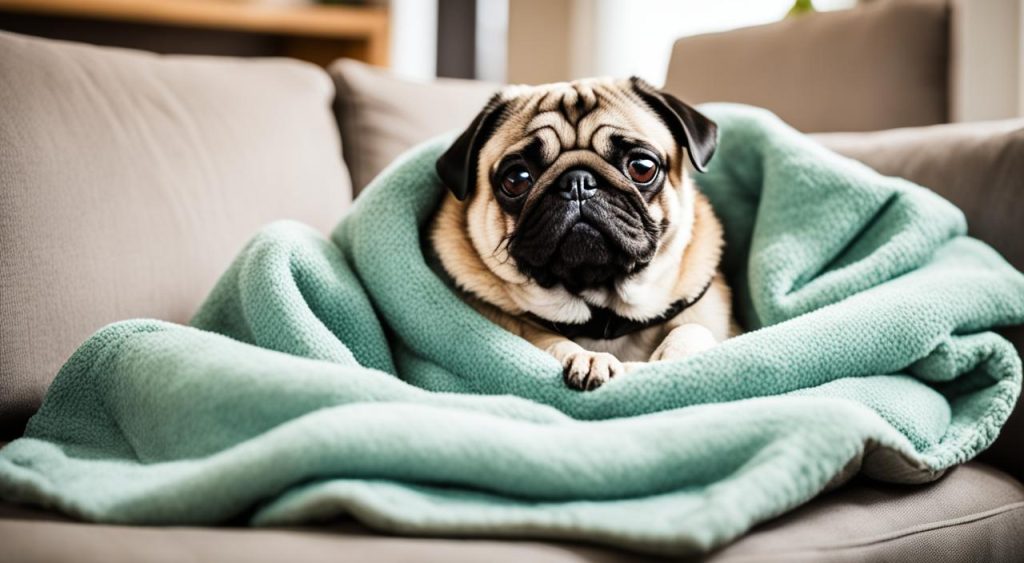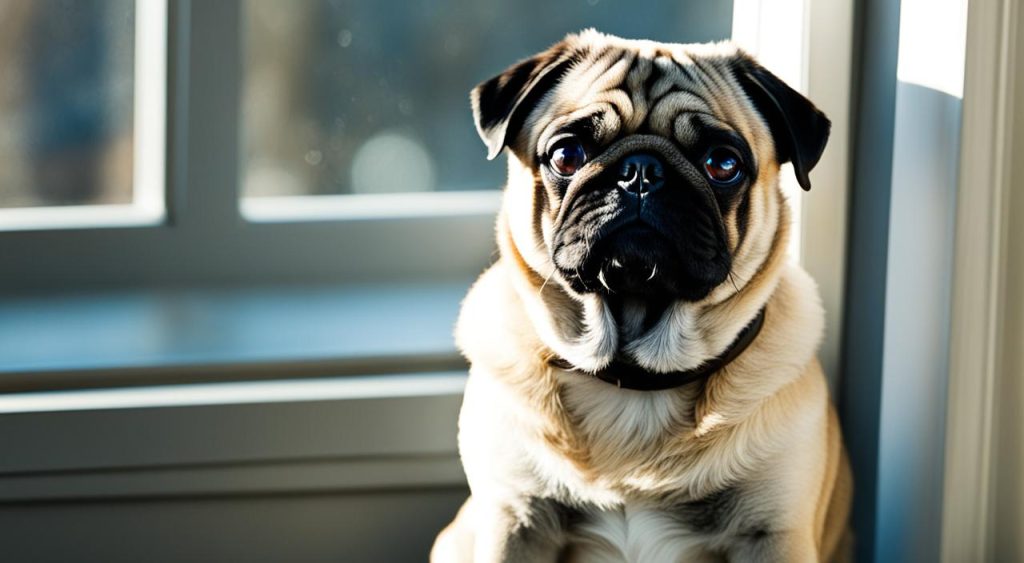Pugs are adorable little dogs known for their wrinkled faces and curly tails. If you’re considering getting a pug or already have one, you may be wondering about their exercise needs. While it’s important for all dogs to stay active, pugs have specific requirements due to their unique breed characteristics.
Pugs are brachycephalic, which means they have a shortened snout and flat face. This anatomical trait can cause breathing difficulties and make them more susceptible to overheating. Additionally, pugs are prone to heart problems and hip dysplasia. These health concerns mean that pugs don’t need a lot of exercise compared to other breeds.
So, how much exercise do pugs actually need? The answer is roughly 30 minutes of exercise in their daily routine. This can be split into two shorter walks. It’s important to avoid over-exercising them as it can worsen their health problems and lead to hip dysplasia. Pugs also have different exercise requirements as puppies, and their exercise should consist of short and gentle play sessions rather than intense physical activity.
Key Takeaways:
- Pugs are brachycephalic and have specific health concerns that require careful consideration of their exercise needs.
- Roughly 30 minutes of exercise in their daily routine is sufficient for adult pugs.
- Exercise should be split into shorter walks and gentle play sessions for puppies.
- Over-exercising pugs can worsen their health problems and lead to hip dysplasia.
- Consulting with a veterinarian can provide tailored guidance based on a pug’s age and physical condition.
Finding the Right Exercise Routine for Your Pug
Pugs may not be the biggest fans of walking, so it’s helpful to split their exercise into two shorter walks. This allows them to get their daily physical activity without becoming too tired or straining their bodies. In addition to walks, incorporating enrichment games can provide mental stimulation for pugs. This can include command training, where you teach them to follow basic commands such as sit, stay, and come. Using toys, such as treat-release toys, can also keep pugs busy and mentally stimulated.
Monitoring your pug’s exercise levels is important to ensure they’re getting the right amount of physical activity. You want to avoid over-exercising them, as this can worsen their health problems and lead to hip dysplasia. One way to track their exercise is by using a dog GPS tracker or activity monitor. These devices can help you keep an eye on their activity levels and make sure they’re staying active without overdoing it.
Exercise Guidelines for Pugs
When it comes to exercise requirements for pugs, it’s important to understand their unique needs. The general rule of thumb is to provide 5 minutes of formal exercise for each month of a puppy’s age. However, due to their brachycephalic breed and health issues, pugs require special attention when it comes to exercise.
Over-exercising a pug can exacerbate their breathing problems and increase the risk of hip dysplasia. It’s crucial to tailor their exercise routine based on their age and physical condition. As pugs get older, their exercise needs may decrease, so it’s essential to adapt their routine accordingly.
Remember, pugs are not high-energy dogs, and excessive exercise can be detrimental to their well-being. It’s best to provide them with regular, moderate exercise rather than pushing their limits. A daily routine of approximately 30 minutes of exercise is sufficient to keep them physically and mentally stimulated.
Adjusting Exercise for Pug Puppies
Just like any other puppy, pug puppies have specific exercise requirements. However, their brachycephalic characteristics necessitate a more cautious approach. Engaging in short and gentle play sessions is ideal for pug puppies to prevent overexertion and protect their growing bodies.
While it may be tempting to let them play for extended periods, it’s crucial to prioritize their health and well-being over excessive activity. Always monitor their energy levels and allow them to rest when necessary.
By following these exercise guidelines and tailoring the routine to your pug’s specific needs, you can ensure that they stay active, healthy, and happy.
Tips for Exercising Your Pug Safely
When it comes to exercising your pug, their safety should always be a top priority. By following a few simple tips, you can ensure that your pug stays healthy and happy during their exercise routine.
Teaching Leash Walking
One important aspect of exercising your pug is teaching them to walk on a leash and heel. This not only helps to control their movement and keep them safe but also enhances their overall experience. By using positive reinforcement techniques, you can make leash walking an enjoyable activity for both you and your pug.
Avoiding Extreme Temperatures
Pugs are susceptible to overheating due to their brachycephalic nature. To prevent heat-related illnesses, it’s essential to avoid exercising your pug during the hottest part of the day. Opt for morning or evening walks when the temperatures are cooler. If you live in a region with extreme weather conditions, such as hot summers or icy winters, take extra precautions to protect your pug.
Providing Water and Breaks
During exercise, make sure to provide your pug with access to fresh water and regular breaks. Pugs can easily become dehydrated, especially during warm weather. Offering plenty of opportunities for rest and hydration will help keep your pug comfortable and prevent any health issues associated with dehydration.
Mindful of Paw Safety
Pay attention to the surfaces your pug walks on during exercise. Hot pavement or icy sidewalks can cause damage to their sensitive paw pads. Before heading out, check the temperature of the ground with your hand. If it’s too hot or too cold for you, it’s likely to be uncomfortable for your pug as well. Consider investing in dog booties to protect their paws in extreme weather conditions.
Caution in Wet or Cold Conditions
In wet or cold conditions, there are specific considerations to keep in mind. Pugs can be prone to eye issues, so be cautious of potential risks, such as windblown debris or cold winds. If you plan to take your pug for a swim, ensure the water is safe, free of harmful chemicals, and your pug is comfortable in the water. Always supervise them closely to prevent accidents.
Remember, the exercise needs of pugs are unique, and their health should always be prioritized. By following these tips, you can provide a safe and enjoyable exercise experience for your pug, helping them stay fit and healthy.
Grooming and Training Considerations for Pugs
When it comes to grooming, pugs have relatively low maintenance needs. Their short, smooth coat requires regular brushing to keep it healthy and minimize shedding. To keep your pug looking and feeling their best, make sure to brush their coat at least once a week. This will help to remove loose hair and prevent matting. Additionally, pugs should be bathed every 2-3 months to keep their skin clean and free from any irritants.
Training pugs requires special considerations, especially when they are puppies. Due to their growing bodies and potential joint issues, it’s important to focus on gentle play and controlled activities. Positive reinforcement methods, such as rewards and treats, work best with pugs. This breed is known for being sensitive, so always use a kind and patient approach when training.
Early socialization is key for pugs to develop good behavior and confidence. Introduce them to different people, animals, and environments to ensure they feel comfortable in various situations. This will help them become well-rounded and friendly companions.
Conclusion
Pugs have moderate exercise requirements and it’s important to provide them with daily physical activity to keep them fit and healthy. However, due to their breed-specific health issues, it’s crucial to avoid over-exercising them.
Finding the right exercise routine for your pug is essential. Splitting their exercise into two shorter walks and incorporating enrichment games can keep them mentally stimulated. Monitoring their activity levels with the help of a dog GPS tracker or activity monitor can ensure they get the right amount of exercise.
Consulting with a veterinarian is important to obtain specific guidance based on your pug’s age and physical condition. With proper care and exercise, pugs can lead fulfilling lives as loving companions.

